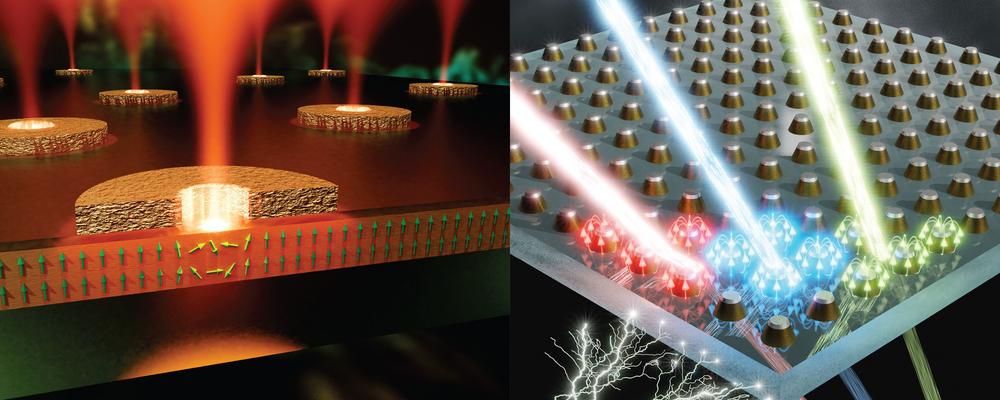“To achieve this, we take the primely efficient light concentrators, optical nanoantennas, and make them channel light to the nanoscale, where we put magnetic materials,” says Alexandre Dmitriev, professor at the Department of Physics.
The researchers have tested two related concepts. In one work, the researchers shrink TbCo rare-earth transition-metal alloy magnets, making them nanosized, to in the future be able to switch their magnetisation with femtosecond light pulses. At the same time, they manage to maintain their critical characteristic for switching with light, out-of-plane magnetic anisotropy.
They then build arrays of such nanoantennas with magnetic nanoelements, and test how nanoantennas channel light to the ferrimagnets, and how the eventual magnetic state could be read-out.
In the other work, optical nanoantennas are placed on top of a continuous nanothin film of TbCo alloy. Shaped as rings, the antennas funnel femtosecond light pulses into the film. The researchers then detect how the film in these spots are demagnetised, a first step in the memory writing process.
Both works show a step towards nanoscale magnetic memory operated with ultrafast light pulses.
“Our society has an unquenchable thirst for data, so data storage is rising exponentially. The required energy for that already amounts to 5 percent of the global energy consumption and is projected to reach 30 percent in the coming years. That is, energy-efficient data storage is essential for the sustainable future,” says Alexandre Dmitriev.
The works has recently been published on the covers of two research journals, Nanoscale and Advanced Photonic Research, and are the result of a collaboration between University of Gothenburg, Uppsala University, nanoGUNE research institute (San Sebastian, Spain) and Radboud University (The Netherlands).

